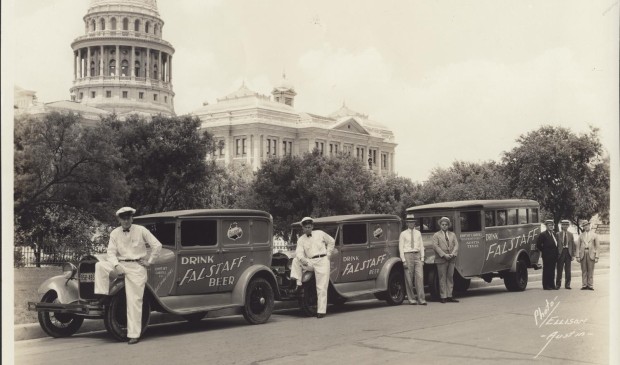Commission says Lightsey house should stay
Wednesday, April 29, 2015 by
Elizabeth Pagano The endless struggles of Lightsey 2 made their way through the Historic Landmark Commission on Monday.
There, commissioners voted in favor of historic zoning for the main house at 1805 Lightsey Road unanimously, throwing a wrench into plans to demolish the residence to make way for the Lightsey 2 development. Commissioners Terri Myers and Dan Leary were absent.
Clad in the now-familiar yellow shirts that have represented protest of the Lightsey 2 development for several months running, South Austin neighbors advocating for the preservation of the house showed up in force.
The Lightsey-Russell House in question was built in 1932. According to Historic Preservation Officer Steve Sadowsky, original owners Charles and Veda Lightsey established a taxi company and one of the first — if not the first — rental car companies in Austin, Lightsey’s Drive-It-Yourself System.
“This may not sound like much to us in our modern, jaded world. But this was the first time in Austin that a person could actually rent a car for hire and drive it themselves and then return it,” said Sadowsky.
Eventually, Charles Lightsey got into the liquor business and, at the end of Prohibition, converted his taxis into liquor-delivery vehicles. Despite the house’s colorful history, Sadowsky had no recommendation to offer commissioners.
Bryan King spoke in favor of the historic zoning and presented his own plans for the Lightsey 2 development. His plans would preserve the house, but the developer told the commission that he saw several problems with them.
“This is an opportunity to save one of the last pieces of Theodore Lowe Heights,” said King. “We’ve gone through churn and burn in our neighborhood.”
South Llano Strategies’ Glen Coleman spoke on behalf of the developer, PSW Real Estate. He assured the commission that they had looked very carefully at the property. He explained that the neighborhood had offered several alternatives to their own development plans for the project, and three of those plans showed the demolition of the Lightsey-Russell House.
Coleman said he was hard-pressed to see why the house merited a tax break. He pointed out that several of the architectural features were not consistent with a Tudor-Revival house, and said the city could set a “higher bar.”
In terms of the history, Coleman noted that it is “a terrible burden of proof for a developer to say that a family is not historically significant. Of course, they were significant. I’m sure they were wonderful people.”
“What they were,” he continued, “were successful, middle- to upper-middle-class entrepreneurs. They are exactly the type of people that should be allowed to move into the houses that we are asking to construct on this property.”
On the other hand, Coleman pointed out, if the commission forced the developer to preserve the house, it would cost about $1 million and cause the developer to sacrifice four planned residences.
PSW Real Estate’s Ross Wilson said they would be using the stone from the demo in a retaining wall and as a site feature, to allow the house to live on in character past demolition.
This strategy did not appease King.
“I snicker at the fact that the developer thinks he can preserve the character of this historic building by taking some of the rubble of the demolished building and putting it on a stone wall or a facade,” said King.
Neighbor Steve Lacker said that he understood the need for infill in the city, but that “in that process, hundreds and hundreds of collective years of history in all of these homes … pass through the hands of all of these infill developers.”
“I feel that they have a responsibility to look at these homes and evaluate the historical worth and, from time to time, pick one out for preservation. And I think that this developer should do that with this home,” said Lacker. “We’re not asking that they preserve every house they encounter.”
Former taxis turned beer-delivery trucks line up in front of the State Capitol.
Photo of beer trucks belonging to the Lightsey Carroll Company Distributors taken by the Ellison Photo Company, available through the Austin History Center and found on the Texas Public Broadcasting Service website.
You're a community leader
And we’re honored you look to us for serious, in-depth news. You know a strong community needs local and dedicated watchdog reporting. We’re here for you and that won’t change. Now will you take the powerful next step and support our nonprofit news organization?








